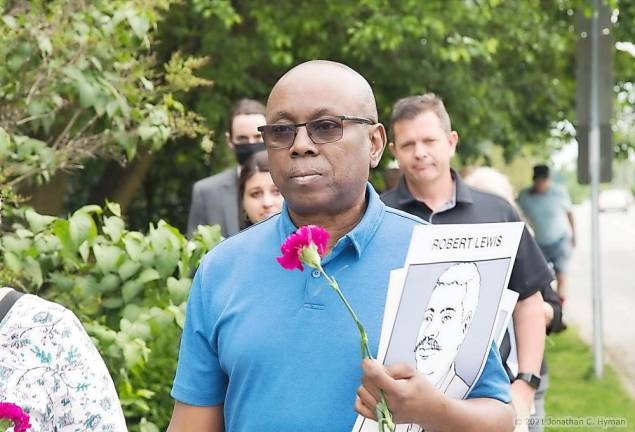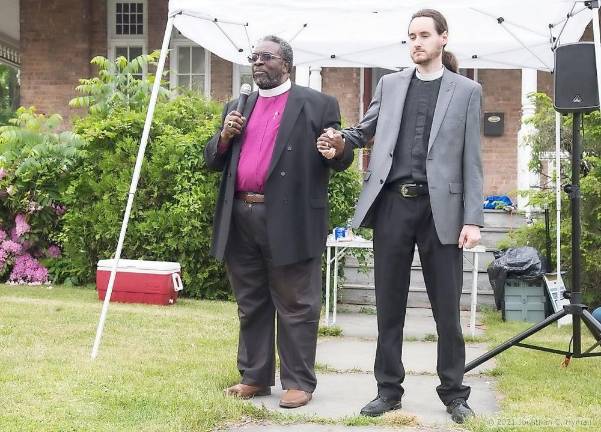Lynching victim “Remembrance walk” by 3 mayors and grass roots group to place historic marker June 2
Friends of Robert Lewis, to memorialize the 1892 lynching victim and address the dynamic behind the crime, have organized annual walks and advocated for the state historic marker, to be placed on June 2



PORT JERVIS – Students from Port Jervis will join a gathering of public officials and advocates for racial justice in dedicating a New York State historic marker on June 2 at the site where a local African American man was brutalized and lynched in front of what is now a church.
They will join Friends of Robert Lewis -- organizers of this remembrance walk -- and the mayors of Orange County’s three cities: Kelly Decker of Port Jervis, Torrance Harvey of Newburgh and Joseph DeStefano of Middletown.
The walk is organized by the Friends of Robert Lewis, a grass roots organization brought together to understand the events that led to the 1892 crime. This will be their sixth “reverential remembrance walk” held in the spirit of community-building and nurturing equality.
It follows the route on which Robert Lewis, an African American Port Jervis resident, was brutalized on June 2, 1892, before being lynched on East Main Street.
Other notables expected to attend include:
-17th District Congressman Mondaire Jones whose legislatively changed district may include Port Jervis after the next election;
- Civil rights historian Philip Dray, author of the award-winning nonfiction account, At the Hands of Persons Unknown, the Lynching of Black America. His newest book – A Lynching in Port Jervis: Race and Reckoning in the Gilded Age -- was recently featured in the New York Times.
– Bishop James Rollins, pastor of the Tabernacle church in Middletown.
– Ray Harvey, NAACP President, Newburgh-Highland Falls.
-Pat Claiborne, of Middletown, a civically involved advocate
- Retired Port Jervis police detective Michael Worden, a local historian and author.
They will join others at the 4:30 p.m. remembrance ceremony and walk that starts at the steps of Port Jervis City Hall, a short distance from where Mr. Lewis, who was accused of raping a White woman, was forcibly extracted from police custody by a mob estimated in the several hundreds, if not thousands.
They will trace the steps of the mob for just three city blocks to the site near what is now a church where Mr. Lewis was murdered. The historic marker will read:
“1892 Lynching: On June 2nd Robert Lewis, A Local Black Resident,Was Mob Lynched Near This Site. No One Was Held Accountable For His Murder..”
Across the street from the lynching site is the former home of Judge William Crane, who was roused from bathing and attempted, unsuccessfully, to stop the lynching. He was the older brother of occasional Port Jervis resident Stephen Crane, whose inspiration for “The Red Badge of Courage” may have come from his time talking with Civil War veterans in the city.
Music for the ceremony will be provided by Hudson Valley’s Souls United, and Port Jervis High School students, along with drummer Maxwell Kofi Donkor, who will also perform a “libation” ceremony. Port Jervis High School students will participate in the ceremony along with the Middletown based youth-oriented group “Because It Matters 24/7”.
The Robert Lewis Remembrance Walk has grown substantially since it was initiated six years ago by Port Jervis native Ralph Drake and a handful of others who were inspired to seek reconciliation with the past and foster community healing.
All are invited to attend.